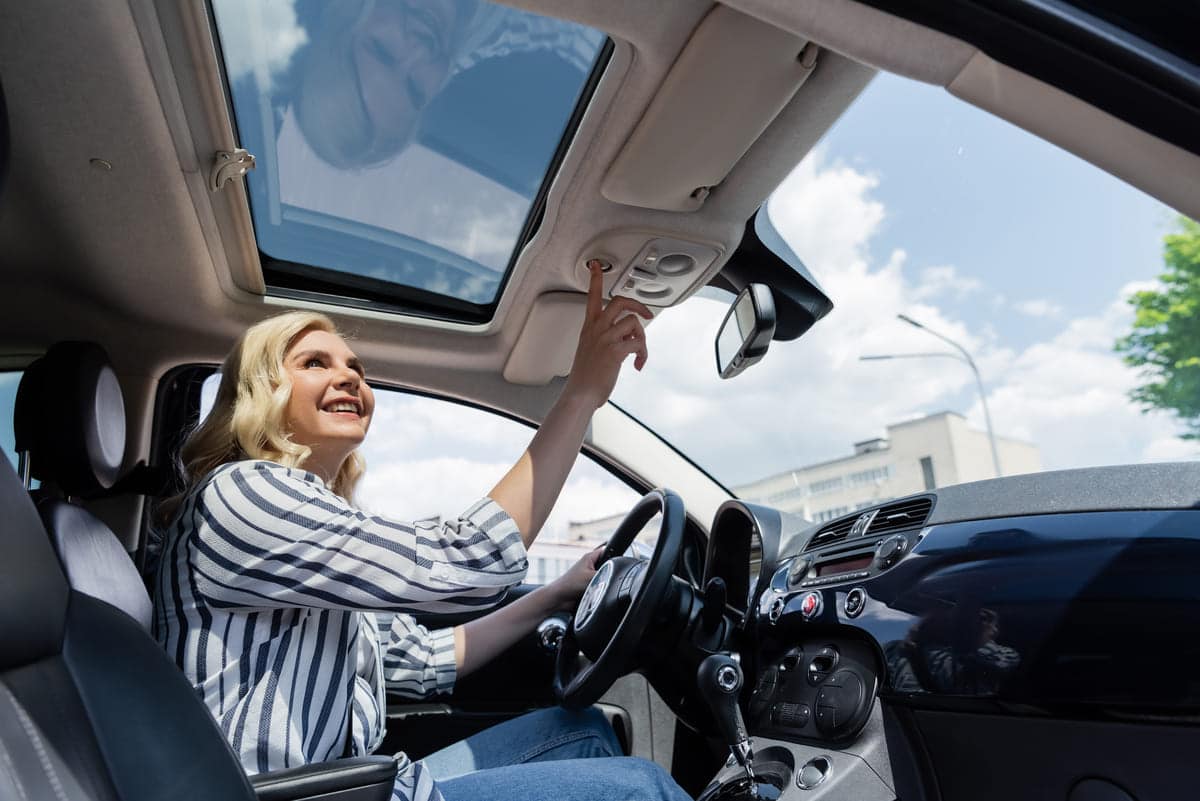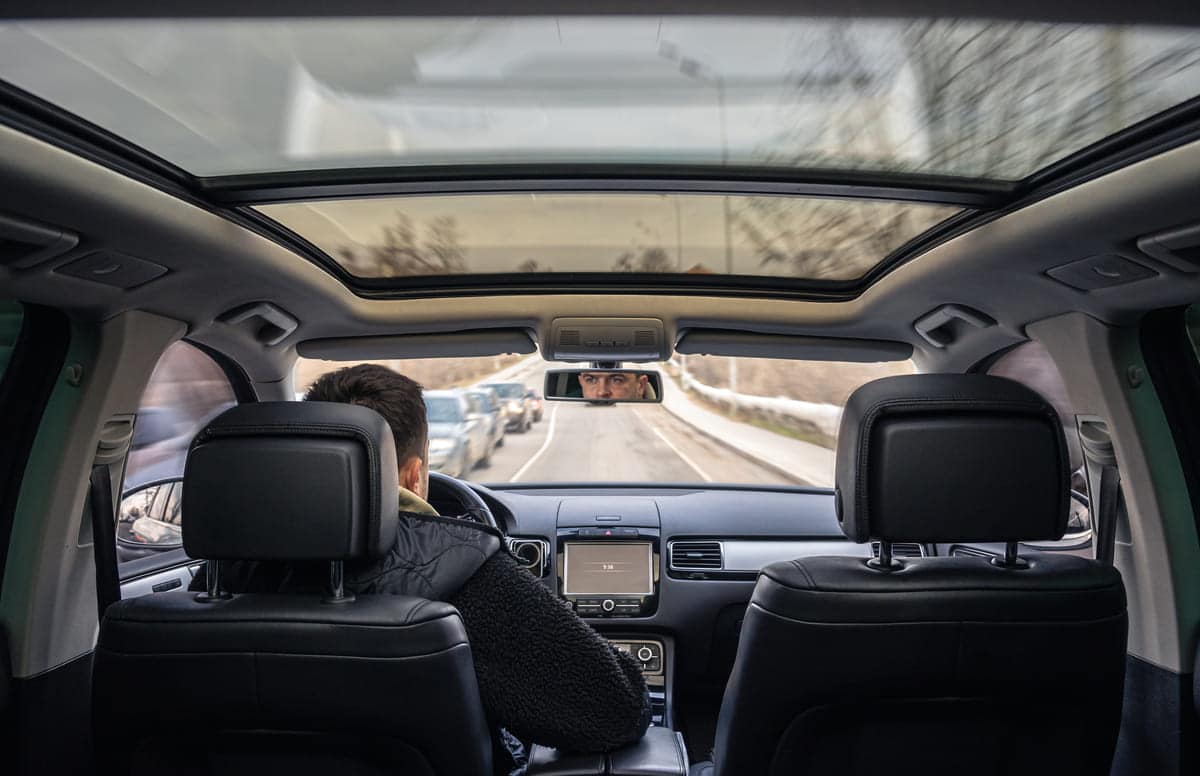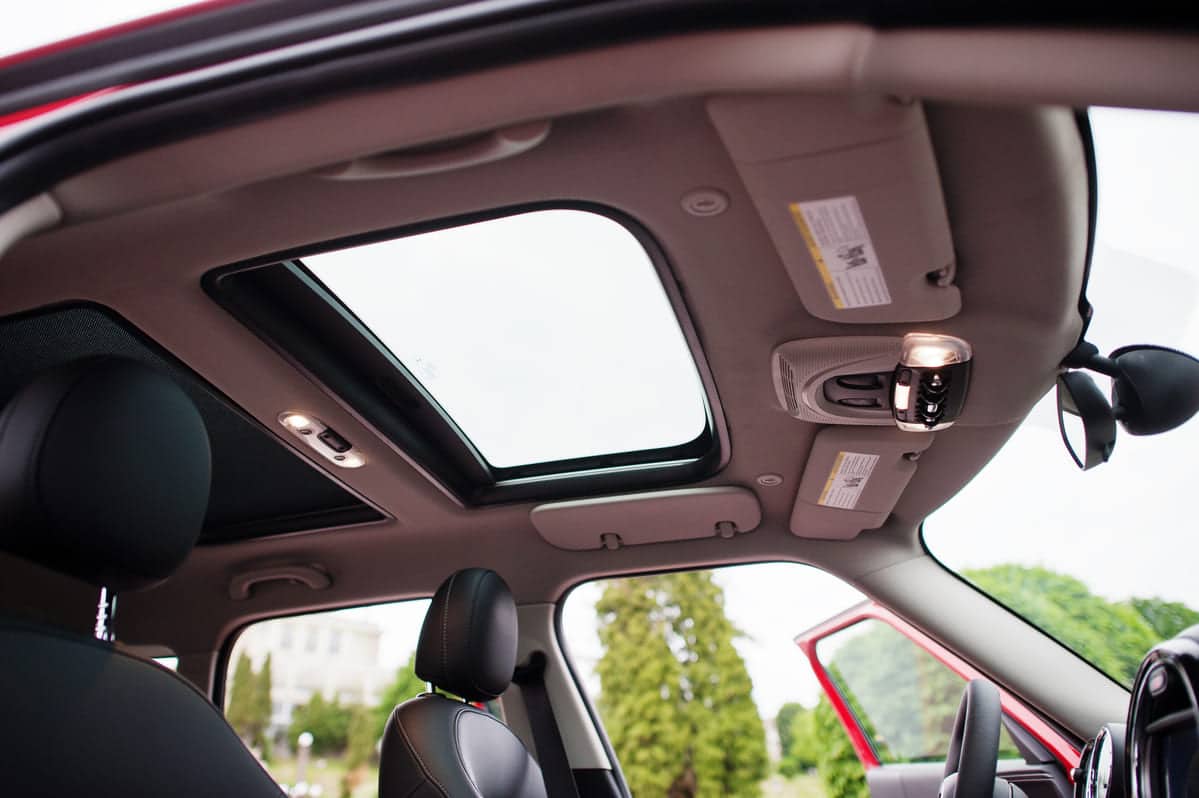Sunroofs come in different designs pop-up, spoiler and panoramic. They are both stylish and functional, improves ventilation and natural light inside the . Modern sunroofs are made with advanced materials and mechanisms for added durability and user friendly.
What is a Sunroof in a Car?
A sunroof in a car is a movable panel on the roof of the motor vehicle. It lets in fresh air and natural light into the cabin. You can open or tilt it using a manual lever or switch.
Sunroofs come in different types – pop-up, spoiler and panoramic. Each type has its own benefits and functionality. Pop-up ones lift out for ventilation, while spoiler ones slide back on the roof.
Panoramic sunroofs covers more area, gives you a wider view. Found in luxury cars. Most modern cars have electric sunroofs for easy use and added convenience.
References
- Sunroof. Wikipedia. Retrieved from https://en.wikipedia.org/wiki/Sunroof
- What Is a Sunroof?. Progressive. Retrieved from
History of Sunroof
The first sunroof was introduced in 1937 by Nash Motors. The early ones were manual, you can open the automobile roof for ventilation and light. Simple in design and became a car feature.
In the 1970s, electric sunroofs became popular. American Sunroof Corporation (ASC) was the first to pioneer this. Electric sunroofs were easier to use with switches, more convenient for drivers and passengers.
By the 1980s, panoramic sunroofs arrived. These larger glass panels gives you a wider view and a luxurious feel. Luxury car makers quickly adopted panoramic sunroofs, added style and user experience.
Today, sunroofs come in different styles and materials. They have advanced motorized systems for easy use. Panoramic sunroofs are still popular especially in luxury cars, evolving with new technology and designs.
References
- History of Sunroof. Wikipedia. Retrieved from

What is the Use of a Sunroof?
A sunroof has practical and aesthetic benefits in a car. Here are its uses:
- Ventilation: Allows fresh air in the car without opening windows. Improves air circulation inside the cabin.
- Natural Light: Brightens up the interior with natural light. Gives a sense of openness.
- Improved Driving Experience: Gives you a sense of openness and connects you to the outdoors. Makes the ride more fun.
- Aesthetic Appeal: Adds luxury to the car. Increases the car’s value and appeal.
- Emergency Exit: Acts as an additional exit in emergencies. Provides extra for passengers.
References
- What is the Role of Sunroof in a Car?. AutoBest. Retrieved from
- Sunroofs in Cars: Pros, Cons, and How to Maintain Them. Financial Express. Retrieved from
Types of Sunroofs in Cars
Sunroofs are one of them. From detachable roofs to foldable roofs, we’ve come a long way with open roofs in cars. The sunroof allows light and air in and is either fixed or movable, manual or electric. Here are the types of sunroofs in the latest cars.
Built-in Sunroof
- Description: Slides between the car’s metal roof and interior headliner.
- Best For: SUVs.
- Benefit: Gives you an open space without changing the car’s exterior.
Spoiler Sunroof
- Description: Tilts and slides open on top of the car’s roof.
- Best For: Compact cars.
- Benefit: Ventilation by sliding back about 60%.
Pop-up Sunroof
- Description: Manually operated tilting panel, sometimes detachable.
- Best For: Budget conscious buyers.
- Benefit: Least expensive and easy to use.
Panoramic Sunroof
- Description: Multi-panel sunroof from front to back.
- Best For: Passenger experience.
- Benefit: Luxurious feel and wider view.
Folding/Ragtops Sunroof
- Description: Fabric panel that folds as it slides back.
- Best For: Classic, convertible-like look.
- Benefit: Adds nostalgia with modern functionality.
Removable Sunroof
- Description: Manually removable panels like convertibles.
- Best For: Maximum openness.
- Benefit: Full access to sunlight and air.
Solar Sunroof
- Description: Equipped with solar panels for extra power.
- Best For: Eco-friendly cars.
- Benefit: Keeps the interior cool and reduces CO2 emissions.
References
- Types of Sunroofs in Cars. Tata AIG. Retrieved from
- Types of Sunroof. Trident Hyundai. Retrieved from

How Do Sunroofs Work?
Sunroofs in cars work in the following steps. Here’s a simple explanation of their mechanism:
- Activation: The driver or passenger presses a button or lever. This starts the sunroof’s opening or closing process.
- Motor Operation: For electric sunroofs, an electric motor powers the movement. The motor drives the gears connected to the sunroof panel.
- Panel Movement: The gears move the sunroof panel along the tracks. The tracks guide the panel as it slides open or closed.
- Tilt Mechanism: In tilting sunroofs, a separate mechanism raises or lowers the panel. This allows ventilation by sliding back about 60%.
- Manual Operation: For manual sunroofs, the user turns a crank or handle. This mechanical movement directly moves the sunroof panel.
- Sealing: When closed, sunroofs use rubber seals to prevent water and air leaks. The seals fit snugly against the roof to ensure a tight closure.
- Safety Features: Modern sunroofs have safety sensors. These sensors stop the sunroof if it detects an obstruction, preventing accidents.
- Maintenance: Regular cleaning and lubrication of tracks and seals ensures smooth operation. Proper maintenance extends the life of the sunroof.
By following these steps, sunroofs provide easy access to light and fresh air, enhancing the driving experience.
References
- How Sunroofs Work. Automotive Training Centre. Retrieved from https://www.autotrainingcentre.com/blog/sunroofs-work-automotive-school/


